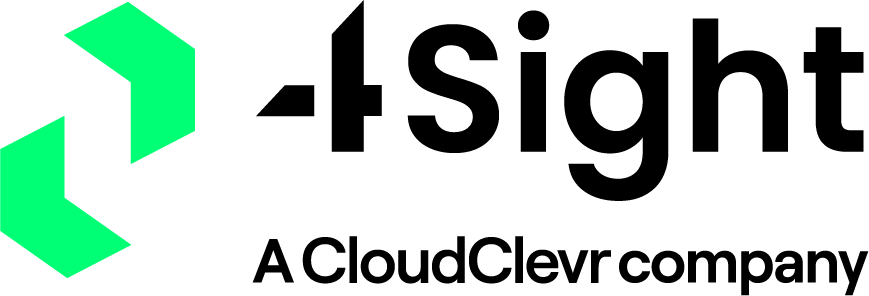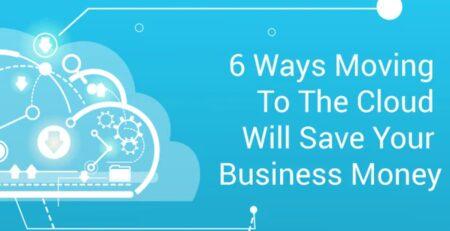A Bird in the Hand: Upgrade vs. Cloud Considerations

Strategic business thinking is all about leverage. To gain a competitive advantage in the market, successful businesses make strategic decisions about how best to capitalize on their strengths. Market success is contingent on the ability to leverage resources, assets and a workforce to create value for customers. Leveraged properly, these elements deliver a big return on investment.
The same strategic approach can be applied to communications systems. There is an almost infinite number of technology options available on the road to a fully optimized platform that can be leveraged effectively. With so many choices, it’s easy to get dragged into a continuous replacement cycle, especially if the shiny new option is the cloud. Although it may be tempting to toss out an old system for a new cloud-based solution from another vendor, you may get a bigger return for your investment dollar by continuing to leverage your existing system until a move to the cloud makes sense for you.
THINK ABOUT LEVERAGE
The maxim “a bird in the hand is worth two in the bush” is appropriate when thinking about communications systems. The asset you already have may provide more benefits to your business than you even realize.
For that reason, upgrades and updates should be your first consideration when you are thinking about how to leverage your premises-based communications system for a competitive edge. After all, one thing you can be sure of is that communications technology continuously evolves. The technological foundation of the system you installed a few years ago has probably already gone through a few changes, so if you haven’t kept up, it’s unlikely that you’re leveraging the full potential of one of your most critical competitive assets.
Optimizing your communications system means staying current – much like you would do with your mobile phone, laptop or tablet – by installing the latest software releases and activating features and functions that are table stakes for newer communications systems like video, collaboration and mobility. It also means thinking strategically with your technology partner about how emerging technologies and creative uses of integrations can revolutionize the workflows in your organization to improve efficiency and increase productivity. A fully optimized system should provide the communication and collaboration features and functions that will enable your employees to maintain that vital connection with each other, suppliers, partners and customers at any time, from anywhere, on a variety of devices and with any application they choose.
CALCULATE THE TCO
Obviously, when weighing the pros and cons of an upgrade compared to a new system, maximizing value is a prime consideration. After all, you’ve made a significant investment in your current infrastructure, so before you rip it out and go through the trouble and expense of replacing it with a separate cloud option, you should know what you are getting into.
With most new cloud systems there will be the initial hard costs associated with replacing your existing phones and accessories which can’t be avoided. In addition to these obvious expenses, you’ll want to calculate the hidden costs that will be caused by the disruption of daily work processes while the new system is being integrated. You’ll also want to calculate the impact on efficiency and productivity that your business will experience while employees learn the new system and integrate it into their own workflows.
Looking beyond the initial bottom-line impact of a new cloud platform, you may also want to compare the total cost of ownership (TCO) for both options over an extended period. Since you’ll be working with your new system for a few years, you should know what it will cost to operate it over the long term.
For example, if you’re a Mitel MiVoice Business customer with a system configured for 100 employees, you can easily calculate what it would cost to upgrade and operate your system compared to replacing it with a cloud solution from a different vendor (see table below*).

Since you have already paid for your system, there is no additional cost for the hardware and software that runs it. You own it. However, by simply adding Mitel MiCollab to facilitate chat and collaboration or a cloud-based application like MiTeam Meetings to enable video conferencing, you can provide employees with the same features and functions you would get from switching to a new cloud vendor. Most importantly, the updates and upgrades needed to keep your system operating at peak efficiency at all times are covered by the Mitel Software Assurance plan. So, over a one-year period, the
TCO for your on-premises system would be $37,000 and over three years the TCO would be $81,000.
Applying the same model when switching to a different vendor’s cloud solution, we can see that while there may be cost advantages in some areas, they are outweighed by charges in others. And although the TCO costs over one year are comparable, over three years they are 34% higher. That’s a significant difference.
GET STRATEGIC
Now, that’s not to say that a move to the cloud should be pushed from your mind. Eventually, all businesses will end up with some form of a cloud-based solution. However, your communications system requirements should be dictated by how the system is expected to contribute to your daily business operation and your communications strategy should evolve with your business needs
If you can address all your requirements by leveraging your existing on-premises equipment, then that’s probably what you should be thinking about before you consider cloud migration. But chances are, there are incremental updates and upgrades you should be making today that will keep your system as flexible as possible, ready to capture opportunities when they arise and enable you to better support the needs of today’s workforce.
LEVERAGE MITEL
Mitel makes it easy for Mitel MiVoice Business customers to think strategically about how best to leverage their current communications system.
The Mitel Software Assurance program is structured to keep your system current and relevant. Through the program’s ongoing tune-up process, you have access to the technology updates that allow your system to deliver the advanced communication and collaboration tools your employees need to compete today and tomorrow.
Then when a move to the cloud makes sense, you’ll already well-positioned for the migration. In most cases, the transition will be virtually seamless, since you will be able to keep your existing Mitel hardware. And the disruption to your business will be minimal because the application interfaces between MiVoice Business and a Mitel cloud solution like MiCloud Flex are the same, so your employees don’t have to learn new systems.
All of which brings us back to leverage. While a rip and replace approach to cloud migration might look like a great idea at first glance, it may not be the best way to leverage your communications system for a competitive advantage. Take a deeper dive into all your options. You may be surprised to discover that the communications system you already have can provide all the strategic leverage and ROI you really need to achieve your short- and long-term business objectives.



